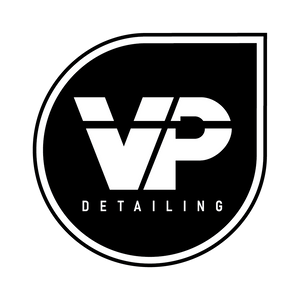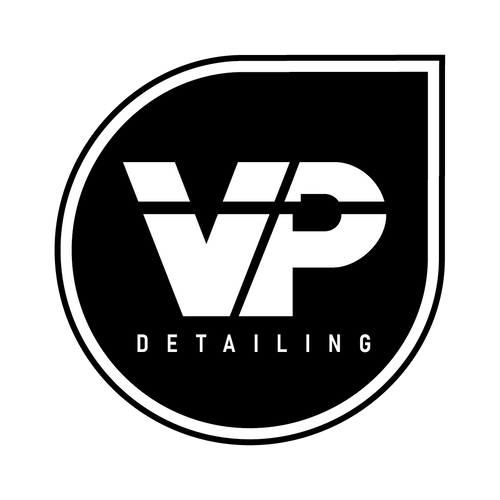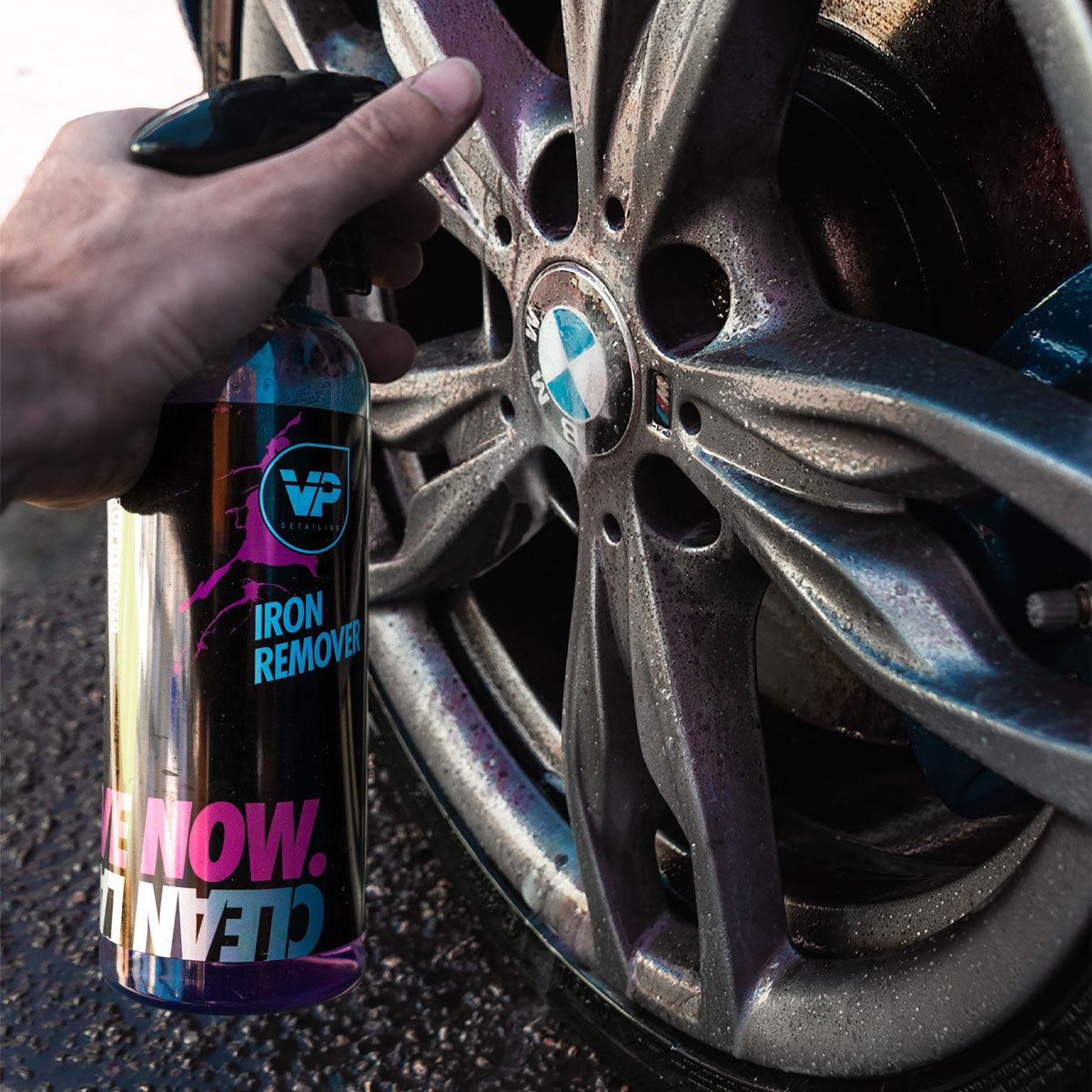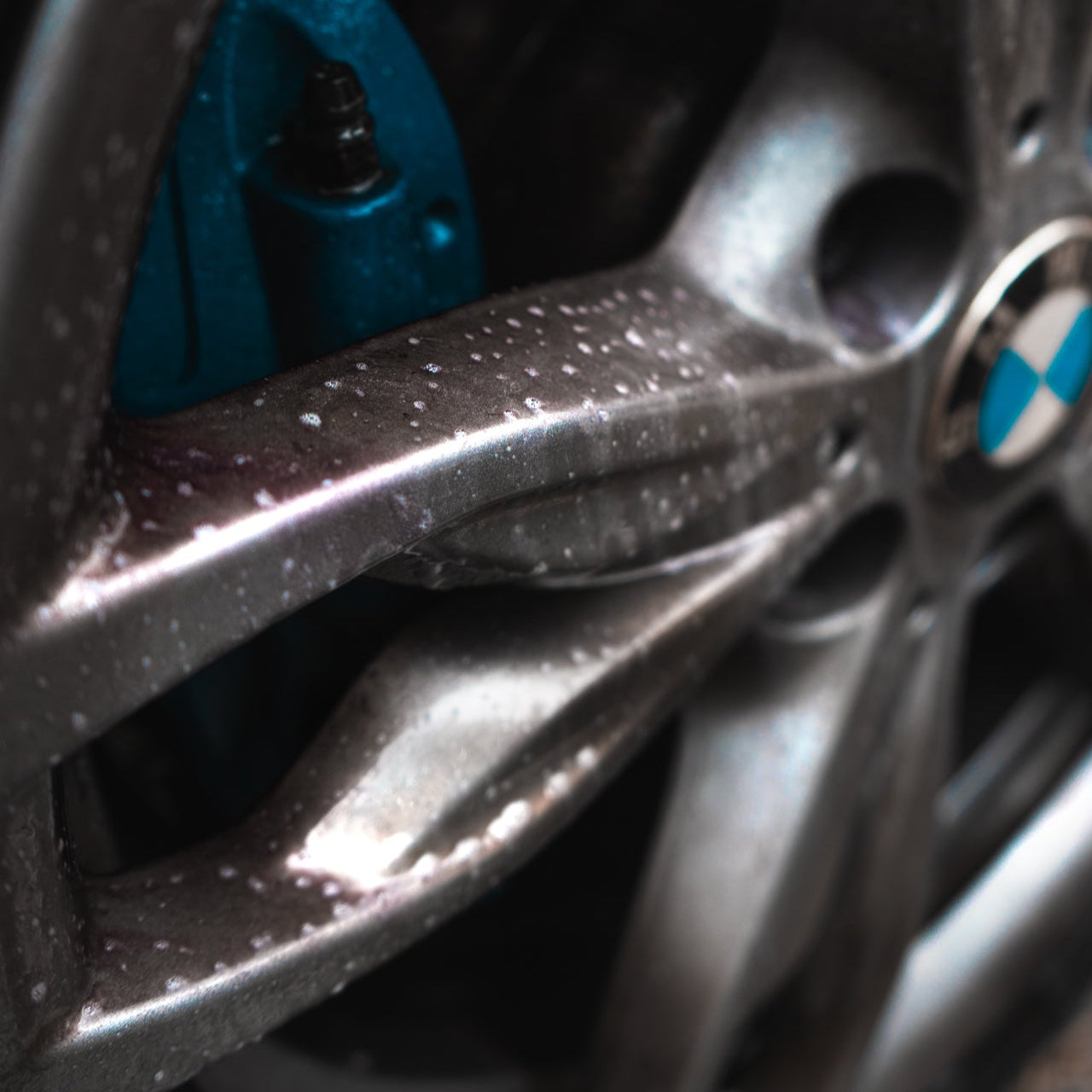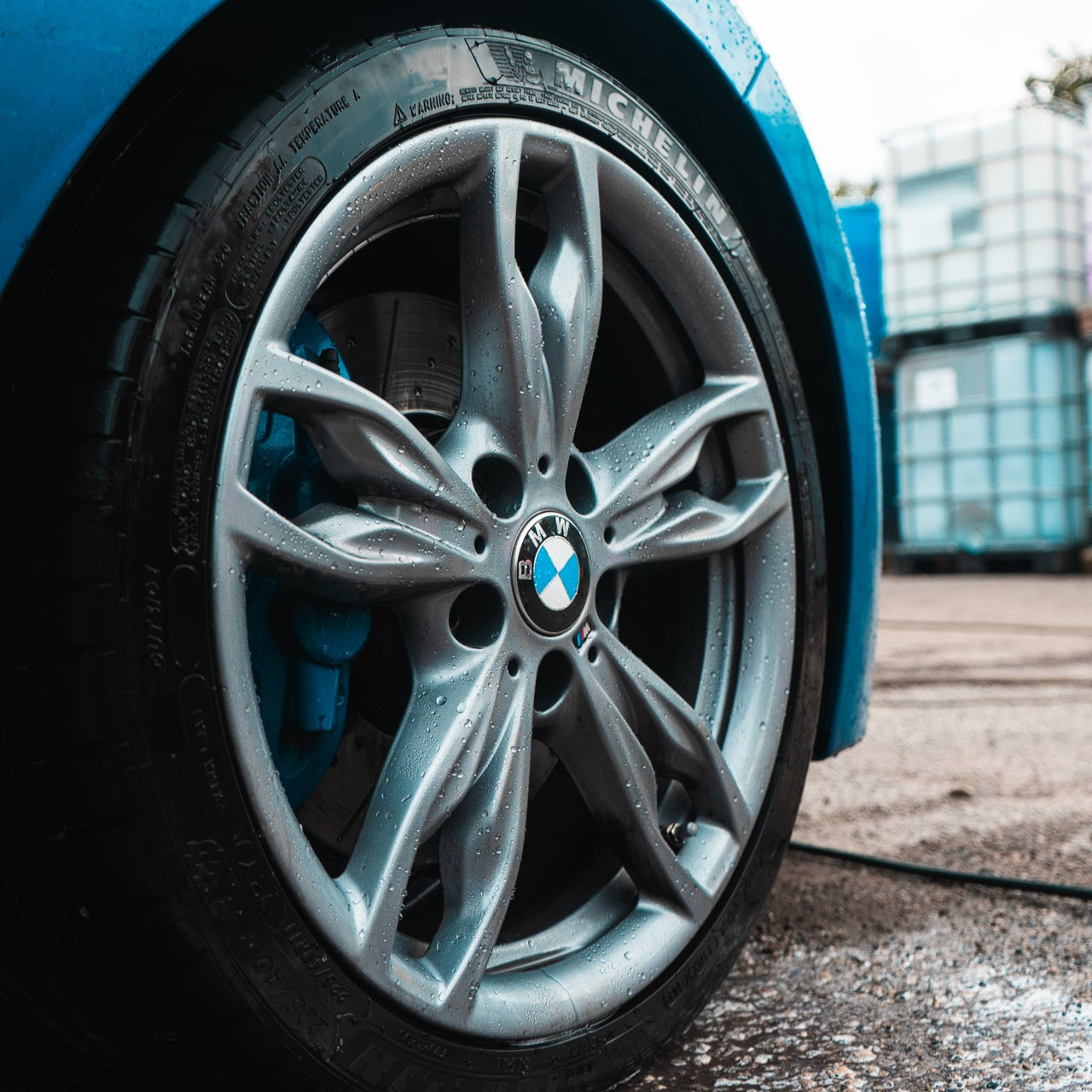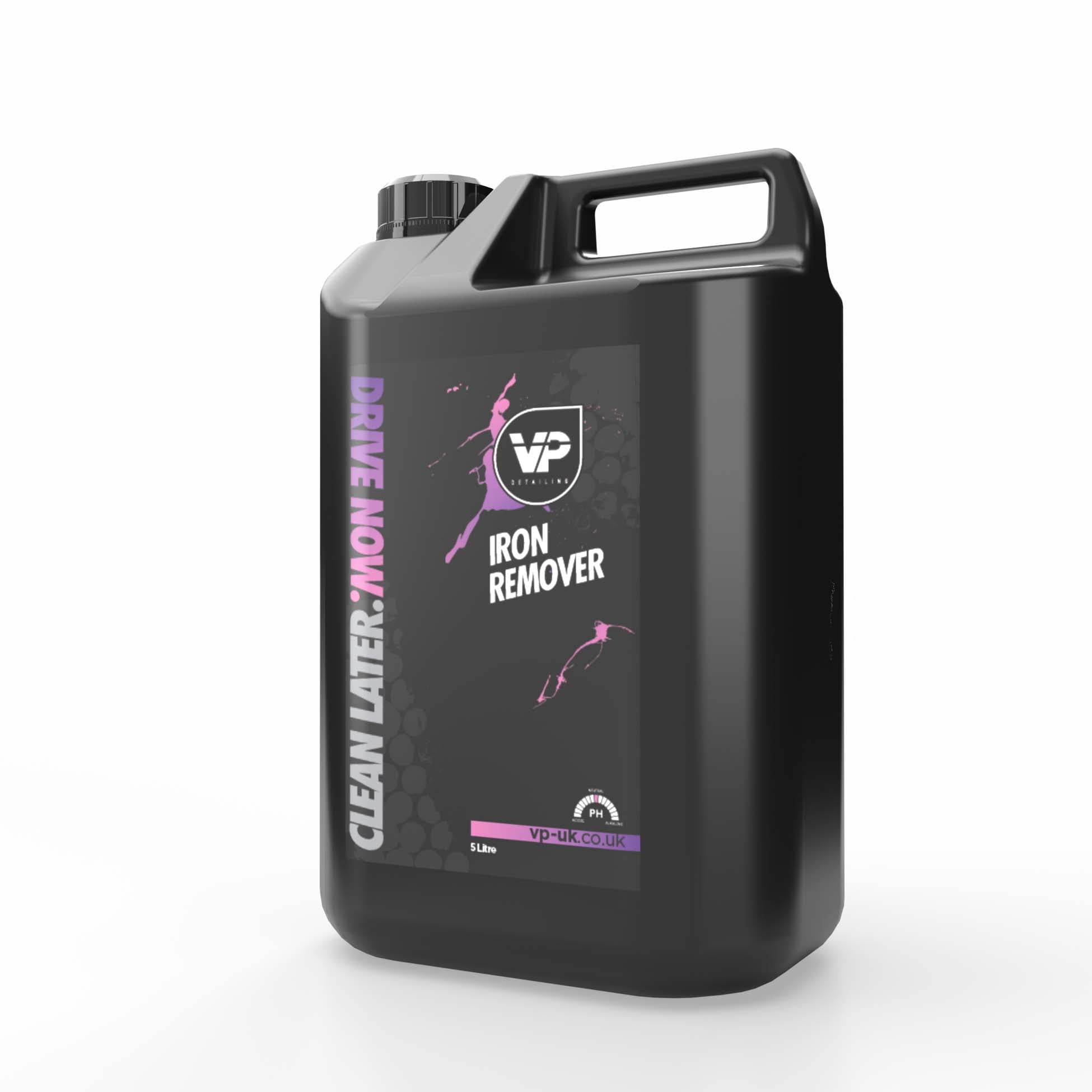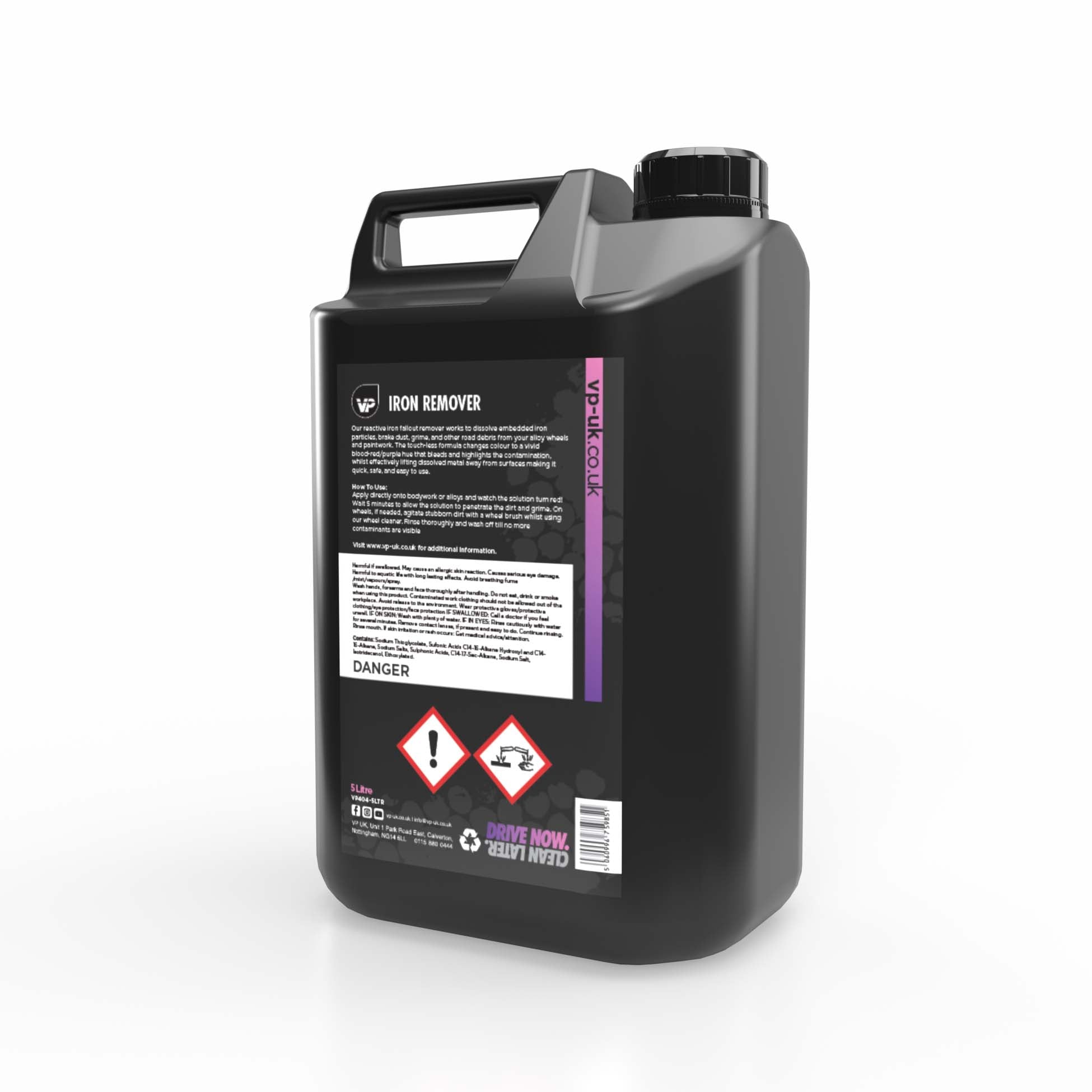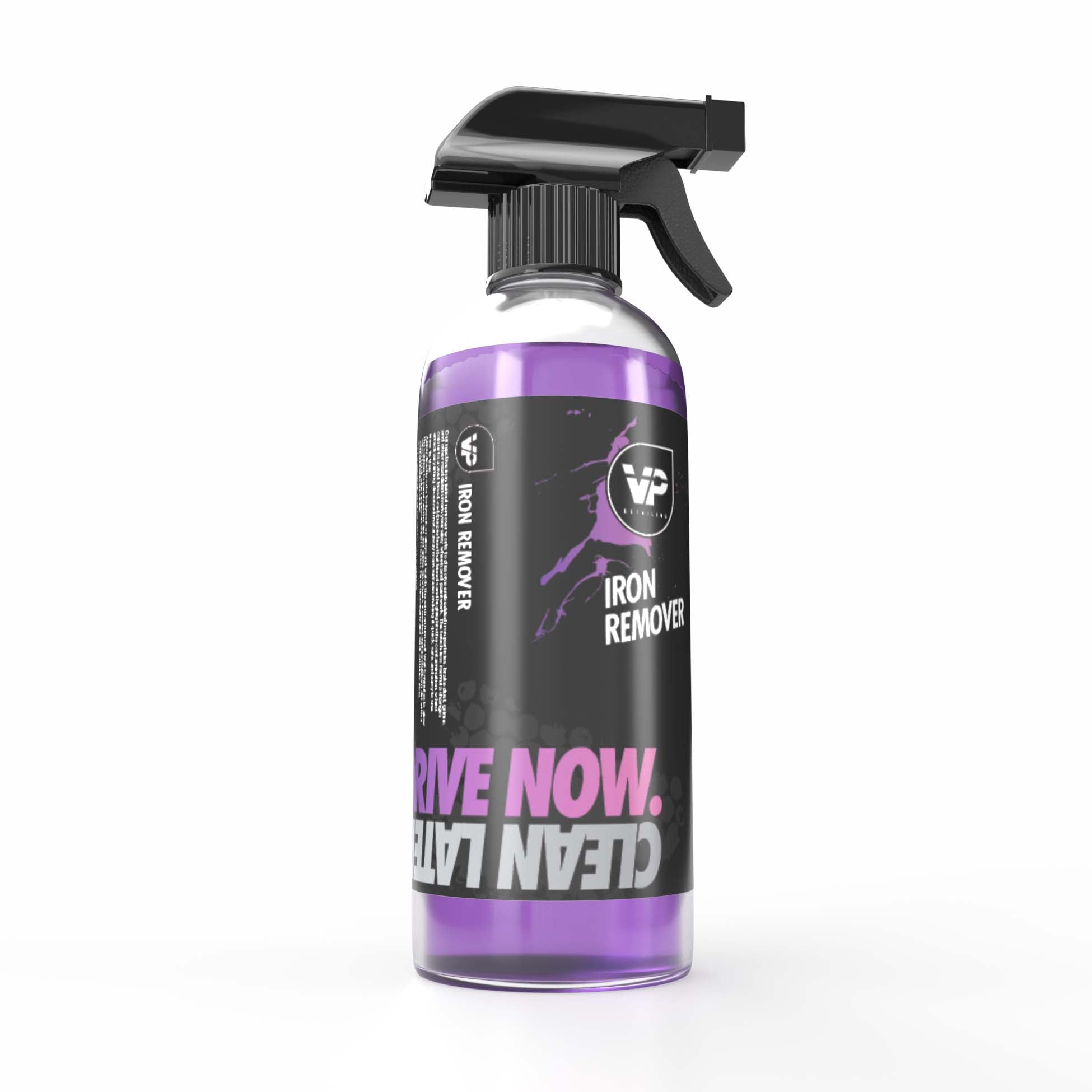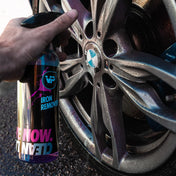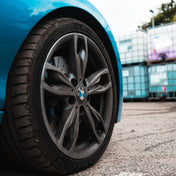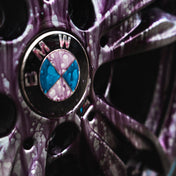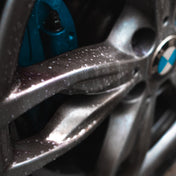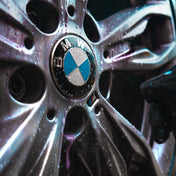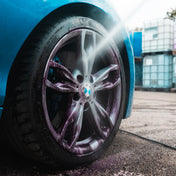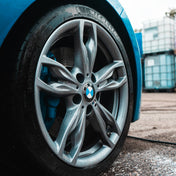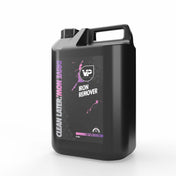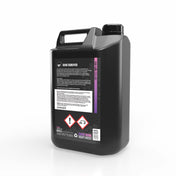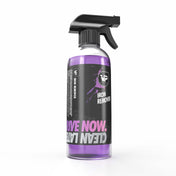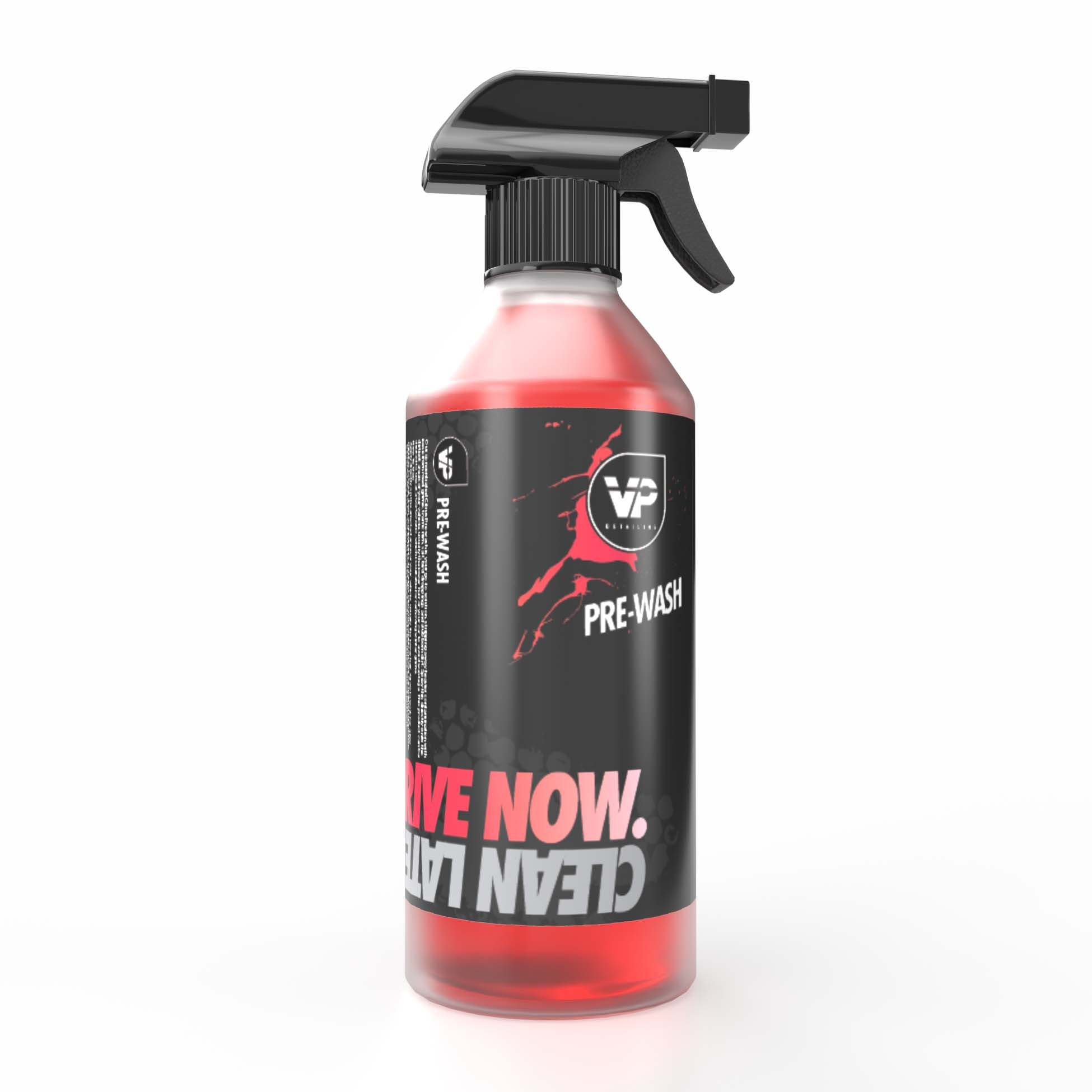IRON REMOVER
Our reactive iron fallout remover works to dissolve embedded iron particles, brake dust, grime, and other road debris from your alloy wheels and paintwork. The touchless formula changes colour to a vivid blood-red/purple hue that bleeds and highlights the contamination, whilst effectively lifting dissolved metal away from surfaces making it quick, safe, and easy to use.
Ph Scale - Ph7 (Neutral)
- Removes Embedded Iron & Brake Dust
- Safe on Paint, Glass, Wheels, & Trim
- pH Neutral – Won’t Harm Coatings, Wax, or Sealants
- Purple “Bleeding” Effect Shows It’s Working
- Restores Slickness & Preps for Protection
- Ideal for Use Before Clay Bar, Polishing, or Coating
- Dissolves Iron & Brake Dust Contamination, Targets and breaks down embedded ferrous particles on
- Heavy degreaser formula combines fallout removal with strong degreasing action for a deeper, more effective clean.
Description
Even if your car looks clean, chances are it’s covered in microscopic, embedded iron particles. These come from brake dust, rail dust, and airborne industrial fallout, and they bond into your paintwork and wheels, creating long-term corrosion and dullness you can’t see, but your clear coat can feel.
VP’s Iron Fallout Remover chemically reacts with these particles, breaking them down and safely dissolving them, turning a vivid purple as it bleeds out contamination.
This is your go-to product for prepping surfaces before polishing, waxing, or ceramic coating, and for maintaining a contaminant-free finish.
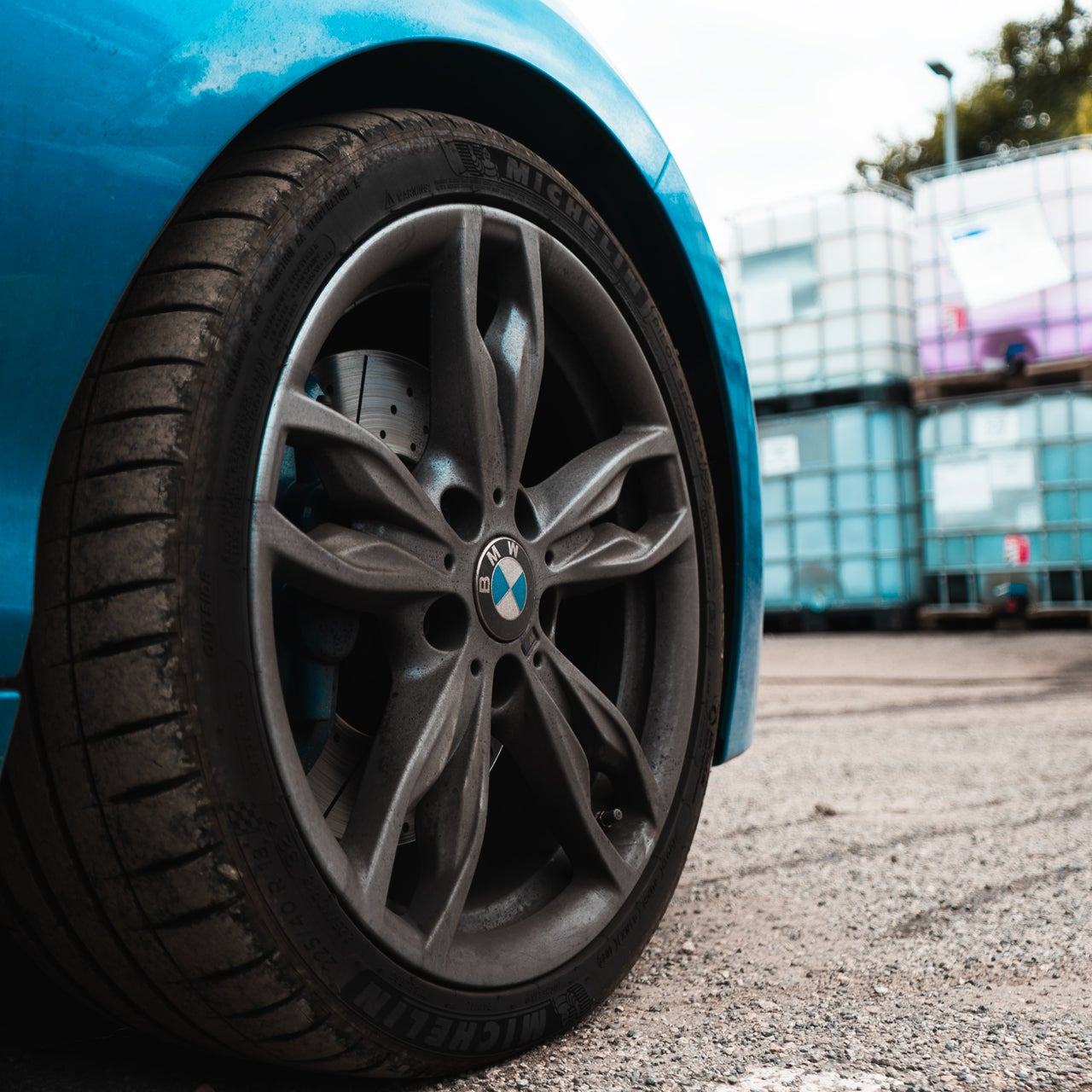
What Is Iron Fallout, and Why Should You Care?
Iron fallout is essentially shrapnel — tiny, sharp, oxidized metal fragments from:
- Brake Dust (your car & others)
- Railway Lines or industrial areas
- High-speed motorway milage
- Daily urban stop/start driving
These particles embed into paint and glass. Over time, they rust, expand, and etch into surfaces. Left untreated, they compromise protection layers and make polishing riskier, pulling out particles during correction can cause scratches and swirls.
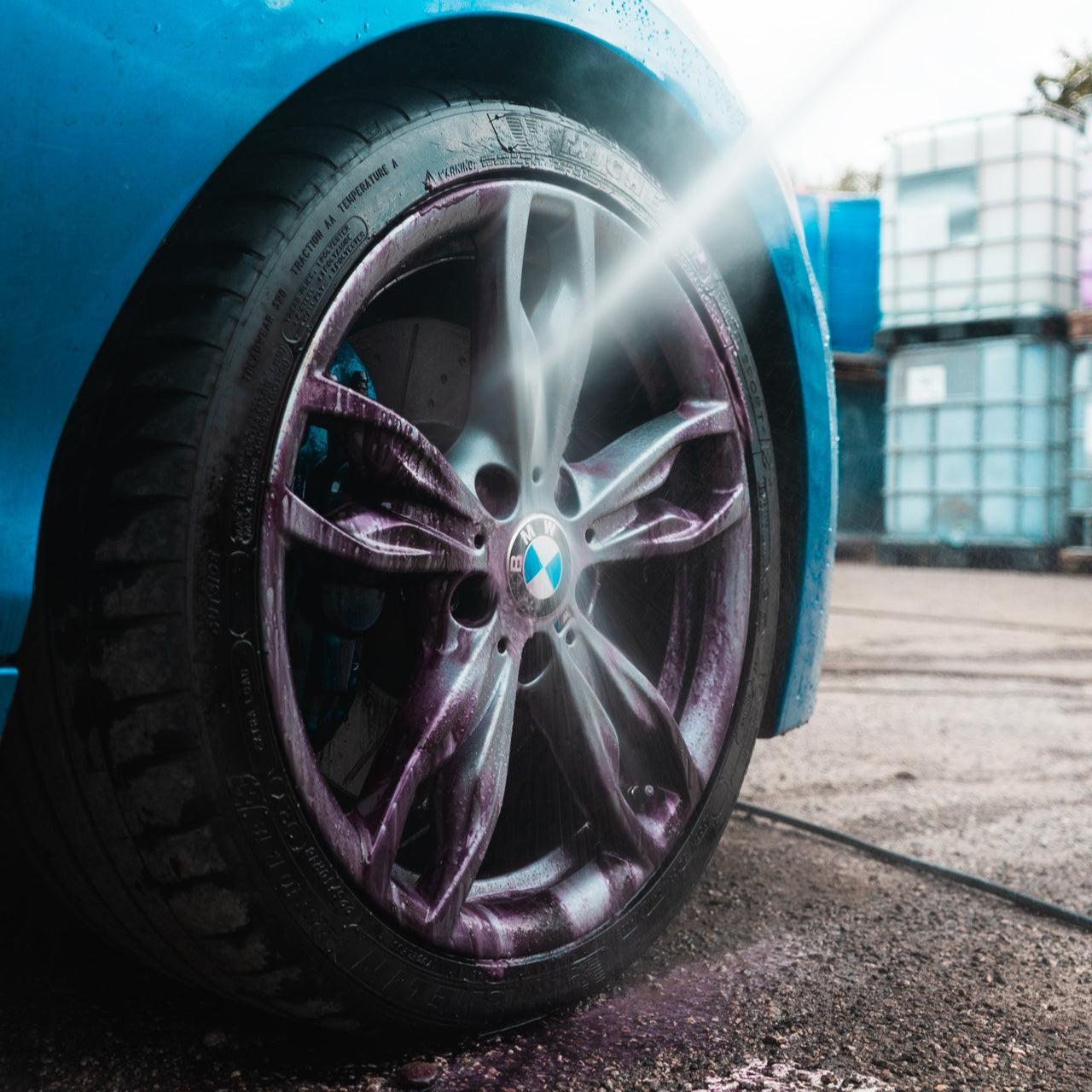
Use on Wheels vs Paint: When, Why, and How
WHEELS – The Iron Fallout Hotspot
Wheels are hit hardest by brake dust, which is iron-rich and heat-baked into the surface every time you drive.
VP Iron Fallout Remover:
- Rapidly reacts with embedded brake dust.
- Breaks the bond with lacquered or powder-coated finishes.
- Is safe on alloys, clear-coated, painted, or anodised wheels. Don't worry about overspray, as this is safe for all surfaces.
- Can be used every 1–2 months to prevent corrosion build-up.
- Pairs perfectly with a wheel cleaner or shampoo for a full deep clean.
- Ideal dwell time: 3–5 minutes. Agitate with a brush if needed. Do not allow to dry.
PAINTWORK – Safe Decontamination Before Protection
Even premium paints and ceramic coatings suffer from fallout over time, especially on motorway cars, daily drivers, and vehicles near train lines or industrial zones.
VP Iron Fallout Remover:
- Loosens embedded iron particles that can’t be removed by washing alone.
- Prevents swirl marks by removing contaminants before polishing.
- Smooths out surface roughness before claying or coating.
- Safe for all surfaces, including painted, glass, chrome, and PPF.
- Dwell time: Allow 3–4 minutes, do not allow to dry.
- Recommended frequency: Every 3–6 months, or before any protection layer.
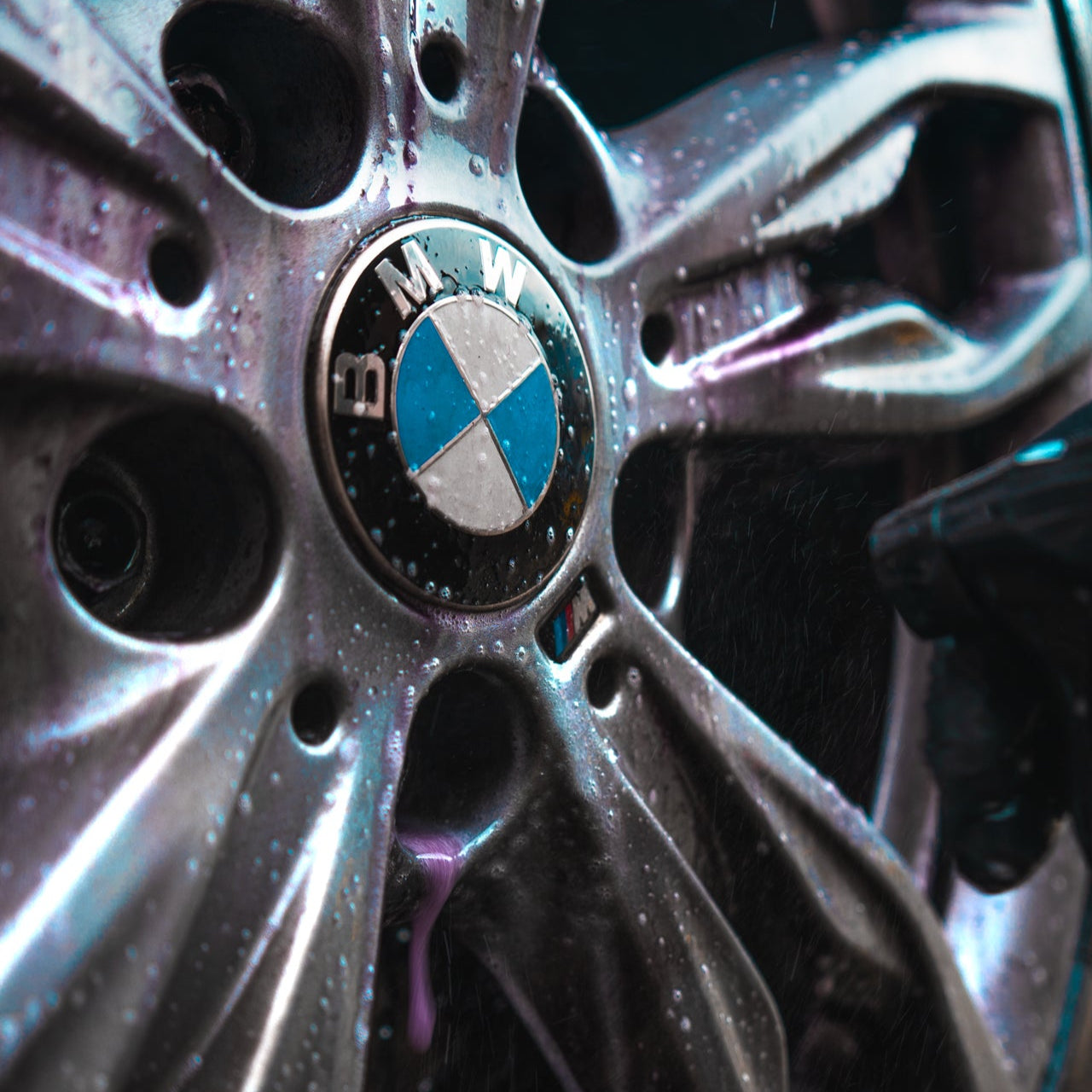
Advanced Decontamination Chemistry – Not Just Fallout, Full Surface Purging
VP Iron Fallout Remover doesn’t stop at reacting with iron particles — it’s formulated with a blend of powerful degreasers and surface-safe cleaning agents to deliver a complete chemical cleanse of every exterior surface.
While most iron removers focus on the visual “bleed,” VP’s formula goes further by:
Eradicating Sharp, Embedded Metal Shrapnel
Iron fallout isn’t dust — it’s microscopic metal shards from brake pads and rail debris. These penetrate clear coat and wheel lacquer, bonding into surfaces with serrated edges. VP’s formula reacts at the molecular level to break the bond, dissolving these particles safely.
Cutting Through Iron and Brake Dust Contamination
Whether it’s city traffic brake dust or motorway fallout, the combination of degreasing agents and reactive chemistry lifts both iron and oily residue, even from difficult-to-clean wheels and inner arches.
Chemically Dissolving & Locking Iron Particles Into Rinsable Solution
Once the reaction starts, iron particles are converted into a solute, locking them into the solution and suspending them away from the surface. This allows them to be rinsed off cleanly and safely, without abrasion or residue.
The Result?
- Cleaner surfaces free of hidden contamination
- Improved bonding for coatings, waxes, and sealants
- Reduced risk of swirls during polishing or washing
- Visibly smoother, safer paint
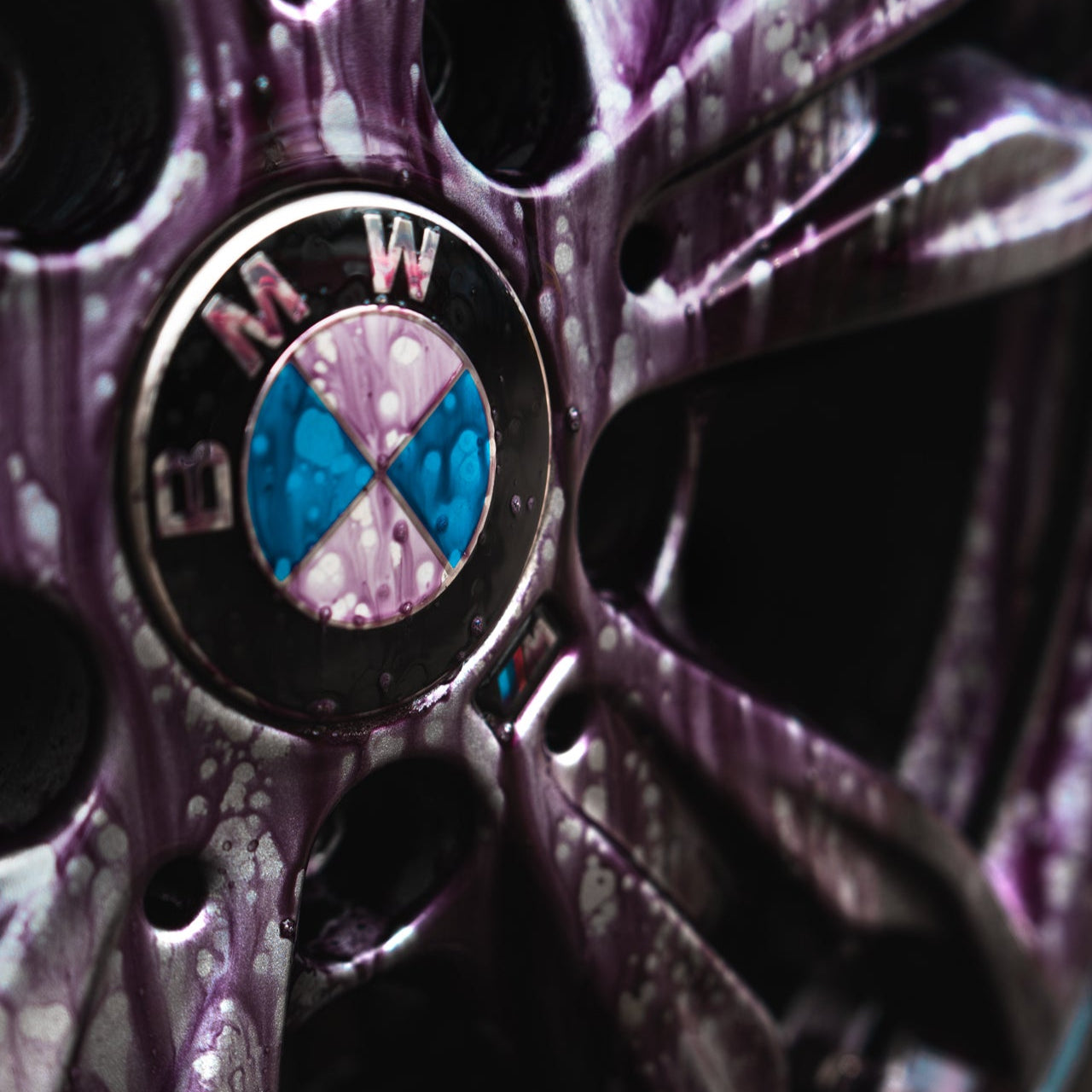
The Decon Science: Why It Turns Purple
The signature purple bleed you see when using VP Detailing's Iron Fallout Remover isn’t just for show — it’s the visible result of a specific chemical reaction between thioglycolic acid derivatives and ferrous iron particles.
The Reaction Explained:
The core chemical process is known as a chelation reaction — where the active ingredients form a bond with iron ions (Fe²⁺ and Fe³⁺), solubilising and dissolving them from the surface. The reaction occurs in the presence of water and oxygen and produces iron-thioglycolate complexes that appear as a deep red or purple colour.
What’s Actually Happening on Your Paint:
- Iron particles (Fe) are embedded in your paint, wheels, or glass — invisible to the eye, but physically bonded to the surface.
- When VP’s Iron Fallout Remover is sprayed, the active agents seek out ferrous material and bind to it chemically.
- A redox reaction occurs which reduces oxidised iron particles, like rust or brake dust, into a soluble form, making them easier to dissolve and rinse off the surface.
- Following the reduction and dissolution of iron particles, a reaction between the iron and thioglycolate compounds produces a distinctive purple colour, a visible sign that decontamination is actively occurring.
Why This Is Good (And Not Just Cool to Watch):
- It Shows the Product Is Working – The more purple you see, the more iron is being safely dissolved
- It Reduces the Risk of Paint Damage – You’re chemically neutralising sharp, rusting particles before they etch or get dragged during polishing
- It Improves Surface Prep – The chemical removal helps prep paint for claying, waxing, or coating by eliminating microscopic contamination
- It’s More Effective Than Claying Alone – Claying removes physical contamination but won’t dissolve iron — this step handles what your hands can’t
FREQUENTLY ASKED QUESTIONS - Iron Fallout Remover
-
Iron fallout consists of microscopic metal particles, often from brake dust, rail dust, or industrial pollution, that land on your car and embed in paint, glass, and wheels. Over time, they can rust and cause corrosion if not removed.
-
Even if your car looks clean, if the paint feels slightly rough to the touch after washing, you likely have bonded contamination. A quick spray of iron remover will reveal purple spots — those are iron particles reacting.
-
The purple bleeding effect shows the chemical reaction between the active ingredient and iron particles. It’s a visual sign the product is working, breaking down the contamination into a rinseable form.
-
Yes, it is pH neutral and safe for use on ceramic-coated vehicles, waxed finishes, and sealants. It won’t strip your protection layer but will help maintain its performance by removing embedded contamination.
-
Absolutely. VP Iron Fallout Remover is perfect for alloy wheels, where brake dust builds up fast. It dissolves bonded iron particles without the need for harsh acids or scrubbing.
-
Using iron remover reduces the need for aggressive claying, but for a fully smooth finish before polishing or coating, follow up with a clay bar. The remover will make claying easier and safer by removing embedded metal first.
-
We recommend using VP Iron Fallout Remover every 1–2 months for wheels, or as part of your paint correction and protection prep process, which we recommend every 3-6 months. It’s also ideal for use before applying waxes, sealants, or coatings.
-
Yes, VP Iron Fallout Remover is safe for clear coat, single-stage, and coated paint systems. Always avoid use on sensitive raw metals and rinse thoroughly after use.
-
It corrodes from beneath the surface, causes micro-pitting, and can be dragged across paint during polishing, leading to swirls, scratches, and failed protection.
-
Yes, and you should. New cars often have more fallout than you’d expect, especially if they’ve been transported by rail or stored near industrial areas. VP’s pH neutral Iron Fallout Remover is safe for use even on brand-new paint and coatings, and it’ll ensure your first protection layer bonds perfectly.
-
It’s not recommended. While VP’s formula is stable, you should avoid applying to hot panels or in direct sunlight. The product can dry too quickly and reduce effectiveness. Always apply in the shade or on a cool surface and rinse before drying.
-
- Iron remover metal-based contamination, like brake dust and rail dust
- Tar & Glue dissolves organic petroleum-based contamination, like road tar, glue, and sap
Both are essential for full decontamination. Start with the iron remover first, then use tar remover to clean what’s left.
